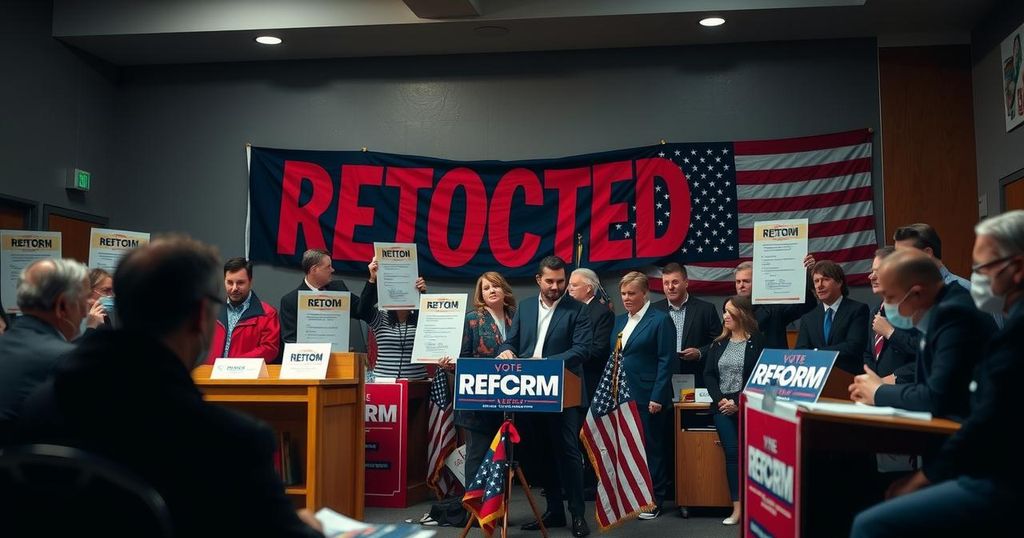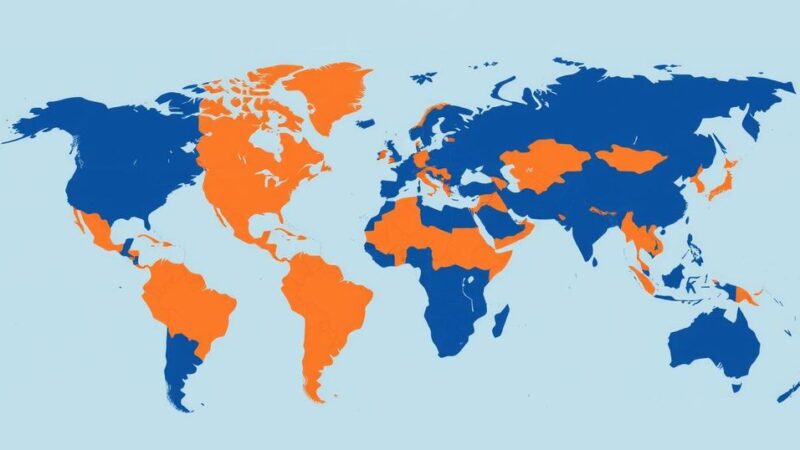Recent election reforms aimed at implementing ranked choice voting and open primaries were overwhelmingly rejected by voters across the U.S. Despite significant funding exceeding $110 million, initiatives in several states failed to gain support. Advocates indicate a need to better engage with voters and consider revising strategies for future reform efforts.
In the recent election cycle, voters across the United States decisively rejected a series of proposed election reform initiatives aimed at overhauling traditional voting systems. Activists had high hopes for these measures, which included ranked choice voting and open primaries, particularly following a notable campaign that raised over $110 million in support of these reforms. However, despite substantial financial backing and a growing advocacy campaign, the proposals failed to gain traction in numerous states, including Arizona, Colorado, Idaho, Missouri, Montana, Nevada, Oregon, and South Dakota. Advocacy leaders noted that the failure indicates a disconnect between the reform movement and the electorate’s readiness for change.
Among the initiatives was the introduction of ranked choice voting, which allows voters to rank candidates in order of preference and eliminates candidates in rounds until one receives a majority of votes. Similarly, open primaries aimed to streamline the electoral process by placing all candidates on a single ballot, regardless of party affiliation. However, voters chose to retain traditional voting methods in the majority of states where these reforms were on the ballot, signaling a preference for established electoral procedures.
Despite successes in places like Alaska, where voters had previously approved both ranked choice voting and open primaries, recent decisions reversed this momentum. Notably, the state of Nevada, which had granted preliminary approval to similar reforms in 2022, completely rejected them in the latest election. Observers note that the apparent failures of these reform initiatives might suggest that they were poorly timed or inadequately supported at the grassroots level. John Opdycke, President of Open Primaries, reflected on the outcome, stating, “It turns out, in retrospect, we weren’t yet ready for prime time.”
Additionally, while ranked choice voting has demonstrated some efficacy in eliminating vote-splitting scenarios, studies indicate that its implementation did not substantially alter election outcomes when compared to traditional voting. In multiple jurisdictions where ranked choice voting was employed, candidates often prevailed with majority first-choice support, thus limiting the need for the secondary ranking process. Critics argue that the method could confuse voters, leading to a lower turnout in council races. After the use of this system in Portland, Oregon, substantial numbers of voters left their ballots blank in mayoral and council elections, raising concerns regarding voter engagement with the new system.
Moving forward, organizations advocating for these electoral reforms are considering a reevaluation of their strategies. The focus may shift towards assembling a stronger grassroots foundation to support such initiatives, as opposed to relying solely on financial contributions for high-stakes ballot measures. Nick Troiano, Executive Director of Unite America, stated, “The question is not if we should continue that effort, but how are we ultimately going to succeed at it?”
The recent electoral cycle saw a concerted push for significant election reforms in various states across the U.S. These reforms primarily focused on implementing ranked choice voting and transitioning to open primaries, reflecting a growing dissatisfaction among segments of the electorate with traditional partisan voting methods. However, despite substantial funding from reform advocates and initial indications of support, voters ultimately rejected these changes, indicating a preference for established electoral structures. This trend has raised concerns and prompted discussions around the effectiveness and clarity of proposed reforms, as well as the timing and manner of their advocacy.
In conclusion, the recent rejection of major election reform initiatives reflects a significant gap between advocacy efforts and voter readiness. While financial investments were substantial, the results suggest that many Americans remain loyal to traditional voting methods, highlighting the need for advocates to re-assess their approach. Future strategies may benefit from enhanced grassroots efforts and targeted educational campaigns to cultivate voter support for proposed changes to the electoral system.
Original Source: mynorthwest.com






